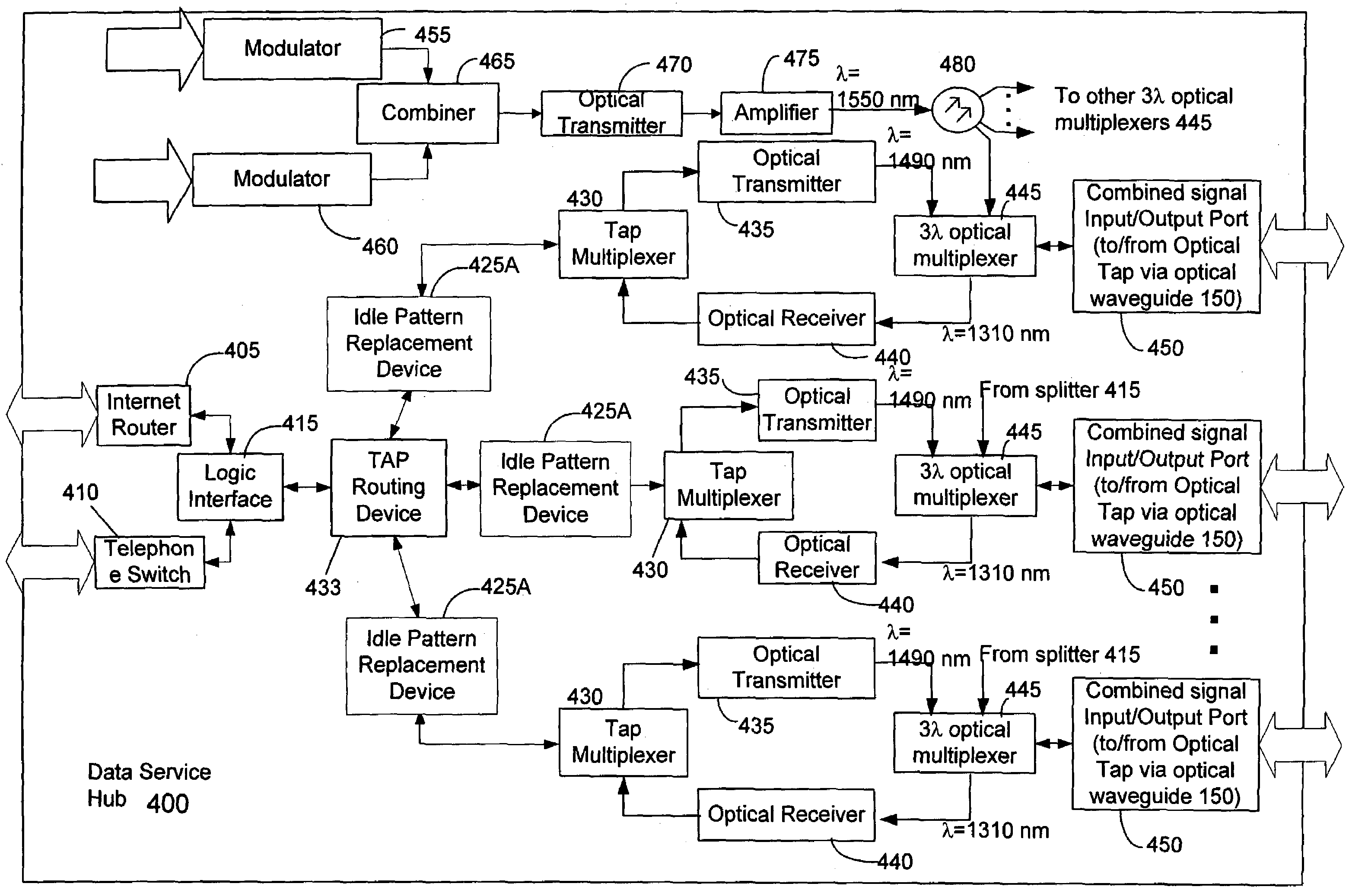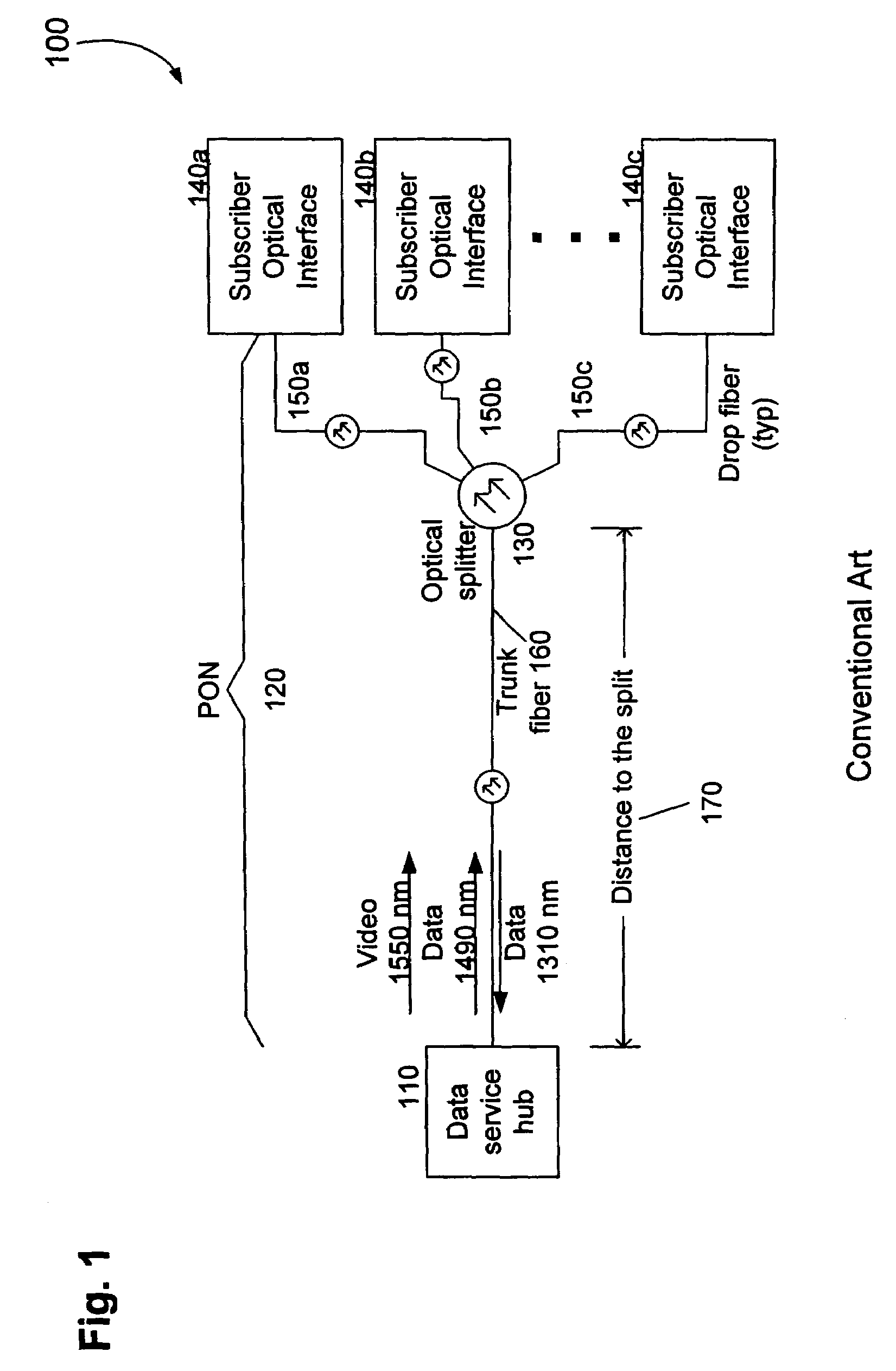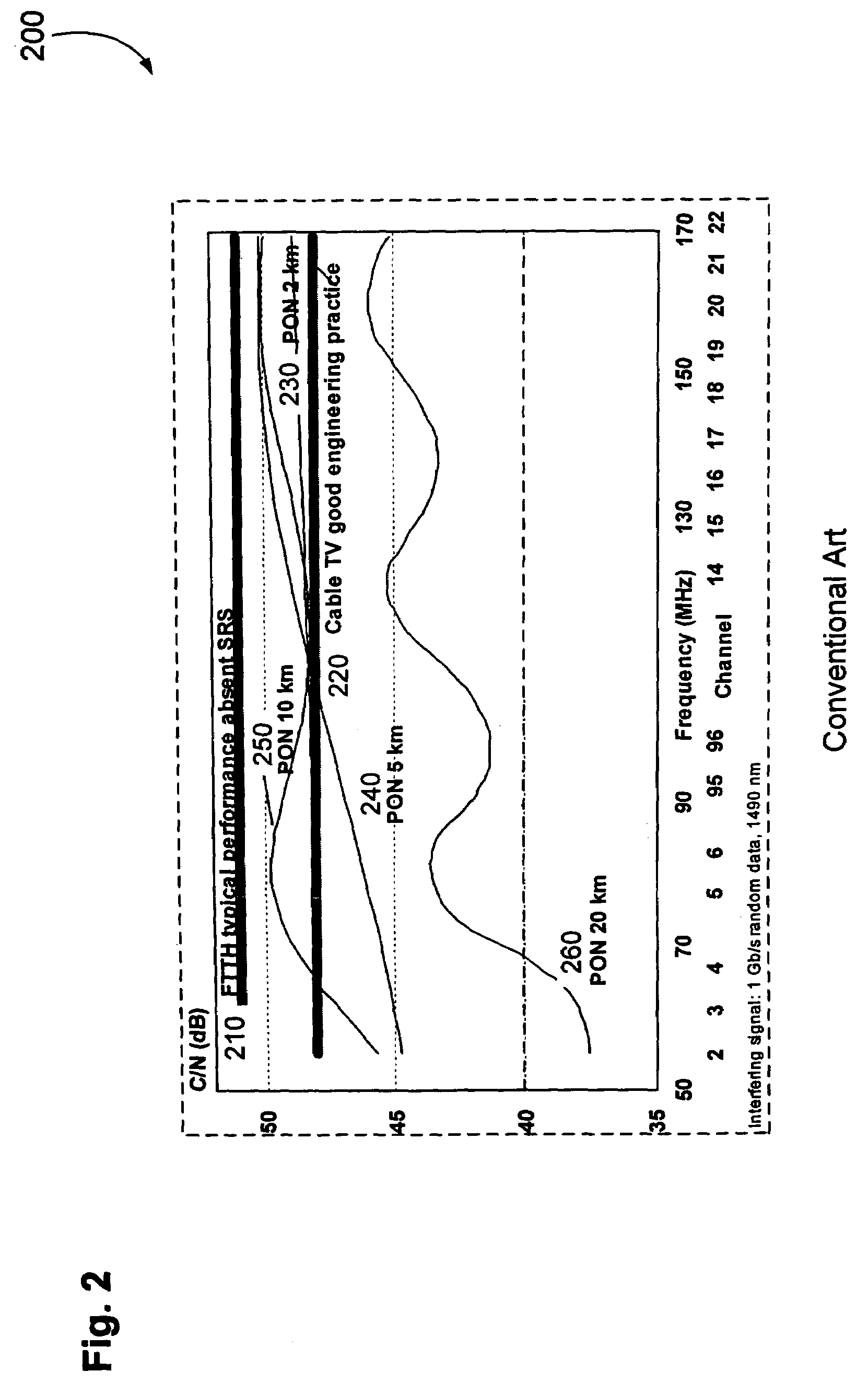Countermeasures for idle pattern SRS interference in ethernet optical network systems
a technology of ethernet optical network and countermeasures, applied in the field of countermeasures for idle pattern srs interference in ethernet optical network systems, can solve the problems of significant optical interference to video signals, srs vulnerability, noticeable degradation of video quality, etc., to reduce or reduce or substantially eliminate srs optical interference in optical networks, and mitigate the effects of srs optical interferen
- Summary
- Abstract
- Description
- Claims
- Application Information
AI Technical Summary
Benefits of technology
Problems solved by technology
Method used
Image
Examples
Embodiment Construction
[0037]The present invention relates to mitigating SRS optical interference between data propagated at a first optical wavelength and video information propagated at a second optical wavelength on the same waveguide. More specifically, the invention relates to improving the quality of video transmissions on a optical network by modifying idle transmission patterns or transmitting random data to a non-existent MAC address when data is transmitted according to a data standard at a first optical wavelength and when the video information is transmitted on a second optical wavelength.
[0038]In an exemplary embodiment of the present invention, an idle pattern replacement device can monitor the downstream data stream of a tap routing device in the electrical domain in order to detect the idle patterns that the routing device generates and that cause SRS optical interference between the optical data signals and optical video signals propagated at two different optical wavelengths. To mitigate...
PUM
 Login to View More
Login to View More Abstract
Description
Claims
Application Information
 Login to View More
Login to View More - R&D
- Intellectual Property
- Life Sciences
- Materials
- Tech Scout
- Unparalleled Data Quality
- Higher Quality Content
- 60% Fewer Hallucinations
Browse by: Latest US Patents, China's latest patents, Technical Efficacy Thesaurus, Application Domain, Technology Topic, Popular Technical Reports.
© 2025 PatSnap. All rights reserved.Legal|Privacy policy|Modern Slavery Act Transparency Statement|Sitemap|About US| Contact US: help@patsnap.com



